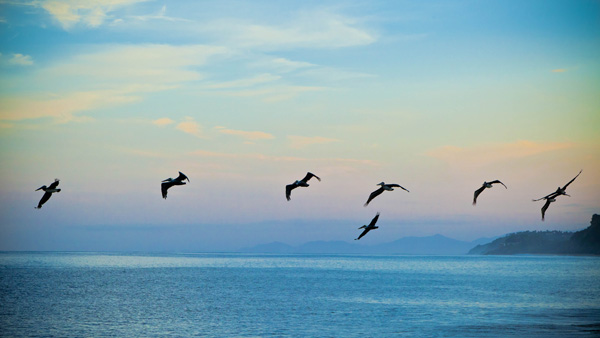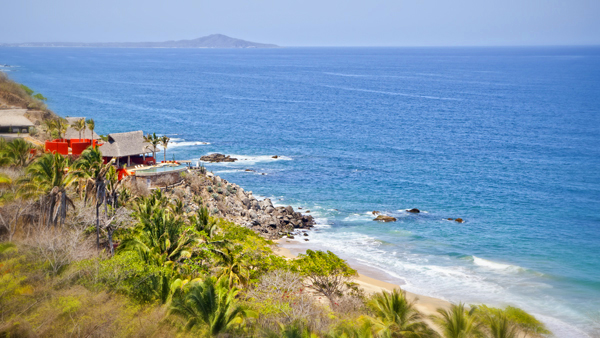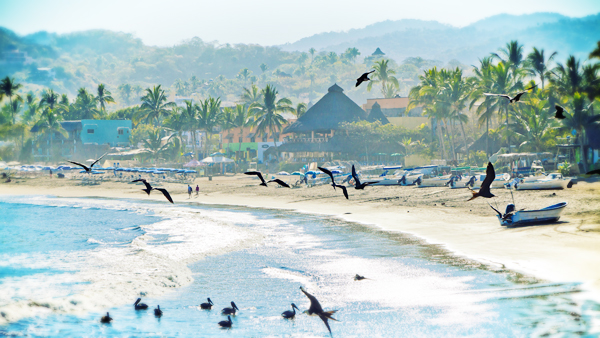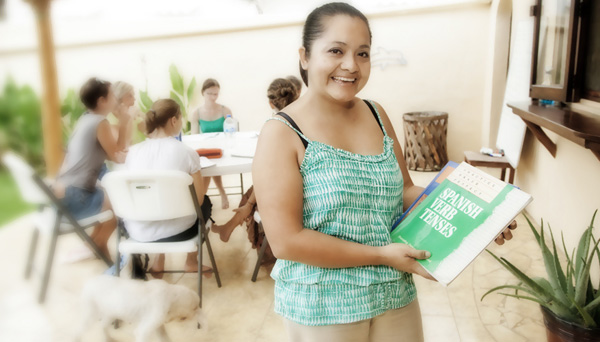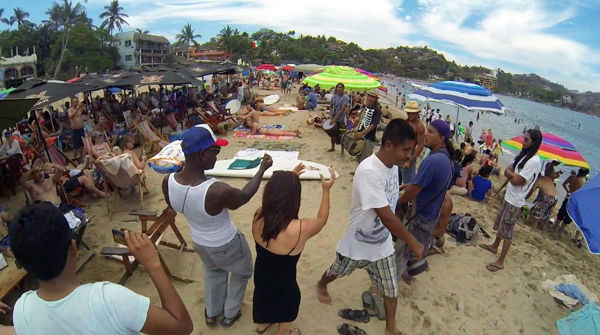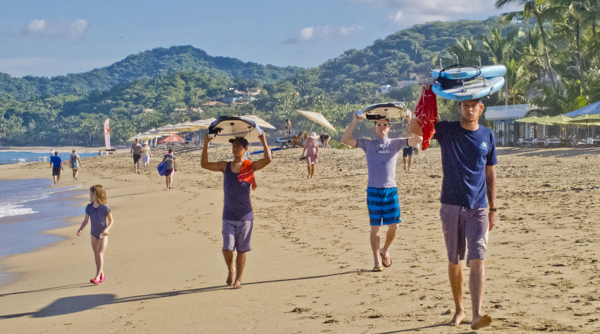This is strictly anecdotal, since I am no bird scientist, avian census-taker, or otherwise deeply versed in the ways of sea-birds, but this season I have seen more brown pelicans around Sayulita than I have in years. Fishermen will tell you it means there are a lot of fish around, since that is what they eat, diving down into a school of fish with their huge beaks open to scoop fish into their gullets.
Doomsayers will tell you I’m being stupidly optimistic since the pelican population has long been on the decline, in Sayulita and everywhere else. That would be due to the encroachment of human beings on their natural habitat, and it would be true. But all is not lost; undeniably there have been many sizeable flocks of pelicans cruising over the waters and waves in recent weeks.
Whatever their numbers, they usually fly in a loose V formation, a squadron undulating and swooping as they eyeball the waves, searching for sardines and other prey. They are mesmerizingly beautiful to watch, elegantly gliding along high overhead or just above the surface of the sea, wingtips often inches apart, maneuvers perfectly coordinated, as if every bird in the flock is receiving a simultaneous command. From somewhere, they are. Watching thirty or forty of these large, fast-moving birds flying in close harmony is an amazing experience. When next you see them coming, take the time to watch.
Pelican notes: some have yellow patches on top of their heads. They are still brown pelicans. The average wing span is over six feet. They inhabit coastal regions from northern South America all the way up the coast of the United States as well as the Caribbean and the Galapagos. They like to hang out with blue-footed boobies, brown boobies, and seagulls—you can see this multi-species congregation out on the Marietas Islands.


